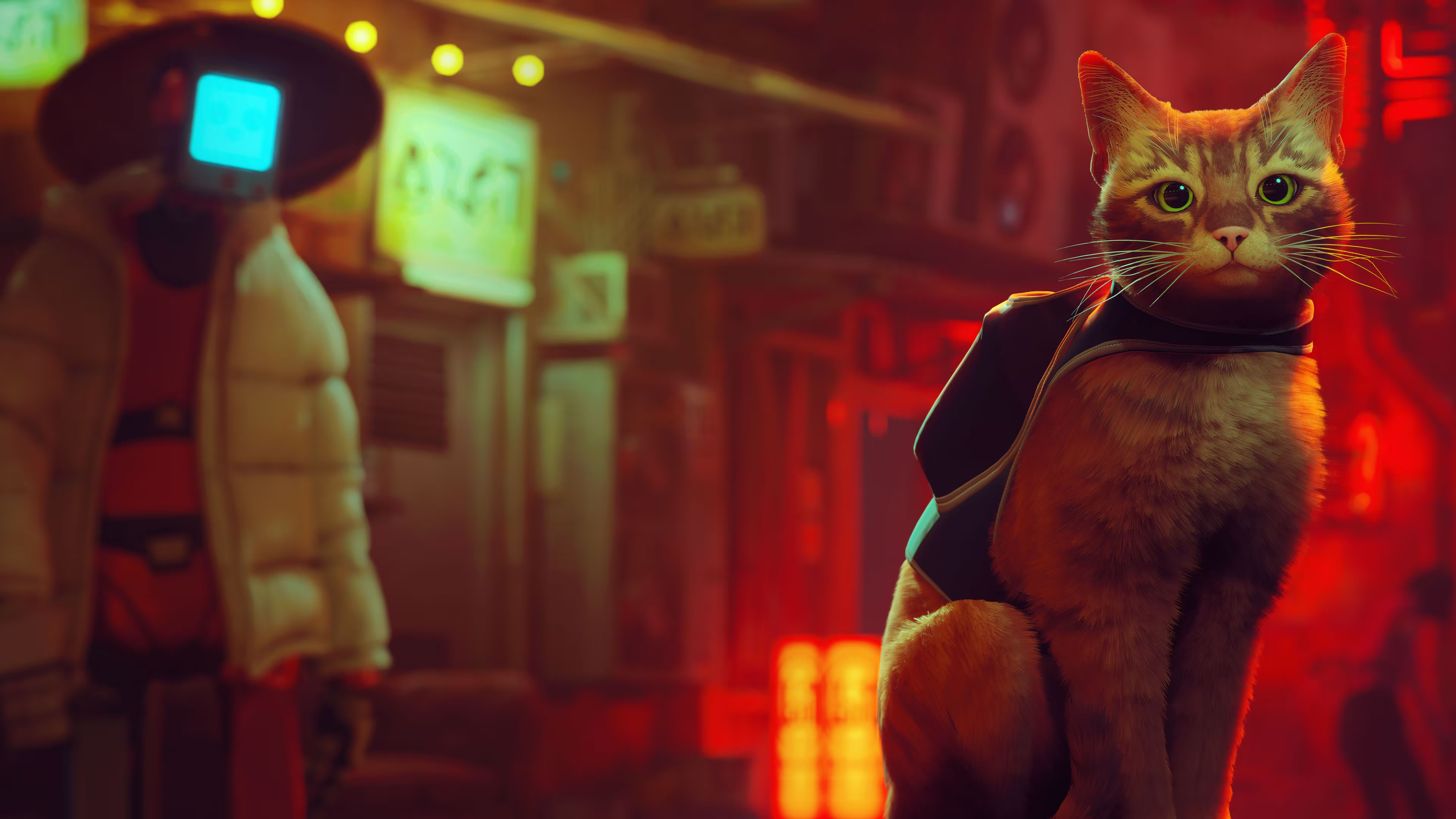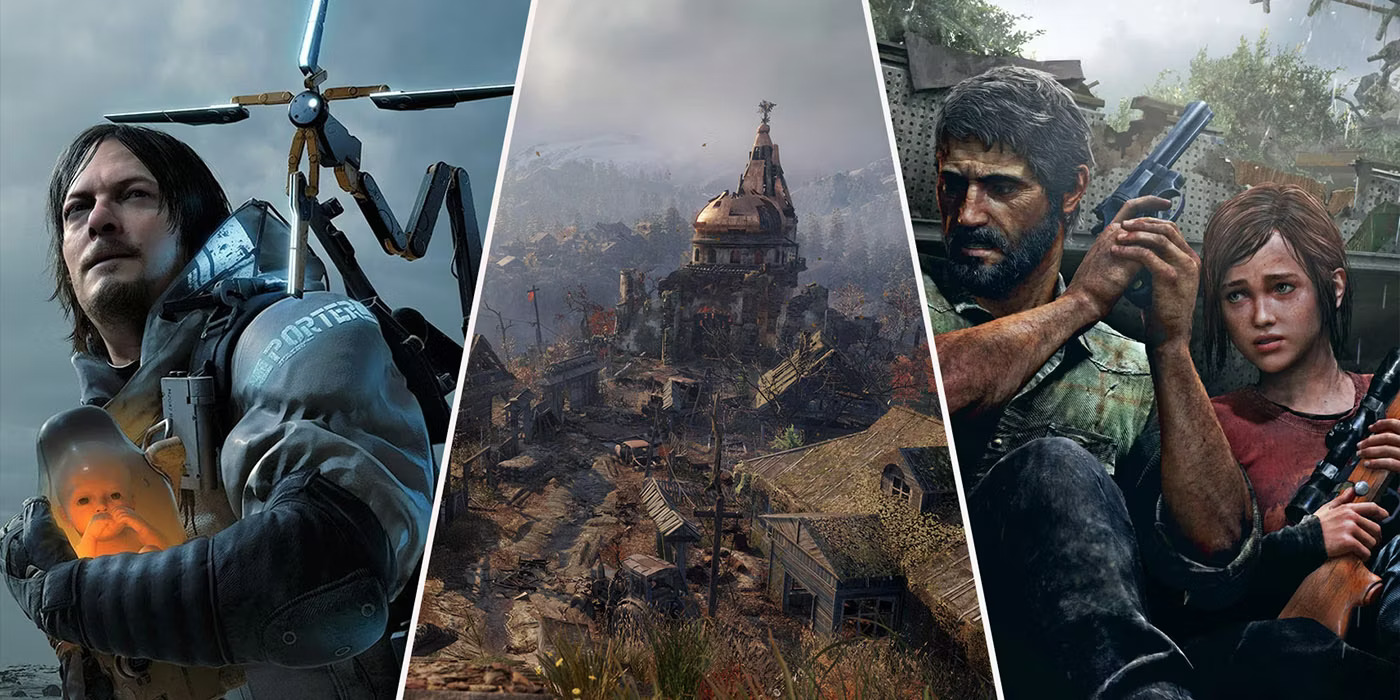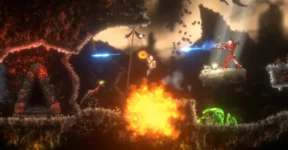Stray is a third-person, narrative-driven adventure game where you play as a stray cat in a decaying cyberpunk city inhabited by sentient robots. Blending platforming, light puzzle-solving, and atmospheric exploration, the game delivers a unique feline perspective on a dystopian world. While lacking traditional combat, Stray captivates players through its emotional story, environmental storytelling, and richly detailed world.
Plot and Setting
Set in a post-apocalyptic underground city sealed off from the surface, Stray begins when the protagonist—a domestic cat separated from its feline companions—falls into the subterranean slums of a robot-run metropolis. As the cat searches for a way back to the surface, it teams up with a small flying drone named B-12, who helps translate the robot inhabitants’ speech and interfaces with the decaying infrastructure.
The city is a mixture of neon-lit alleys, rusted industrial zones, overgrown remnants of humanity, and robotic societies trying to emulate human culture. The journey reveals the mysterious fate of humans, the rise of artificial life, and the resilience of memory.
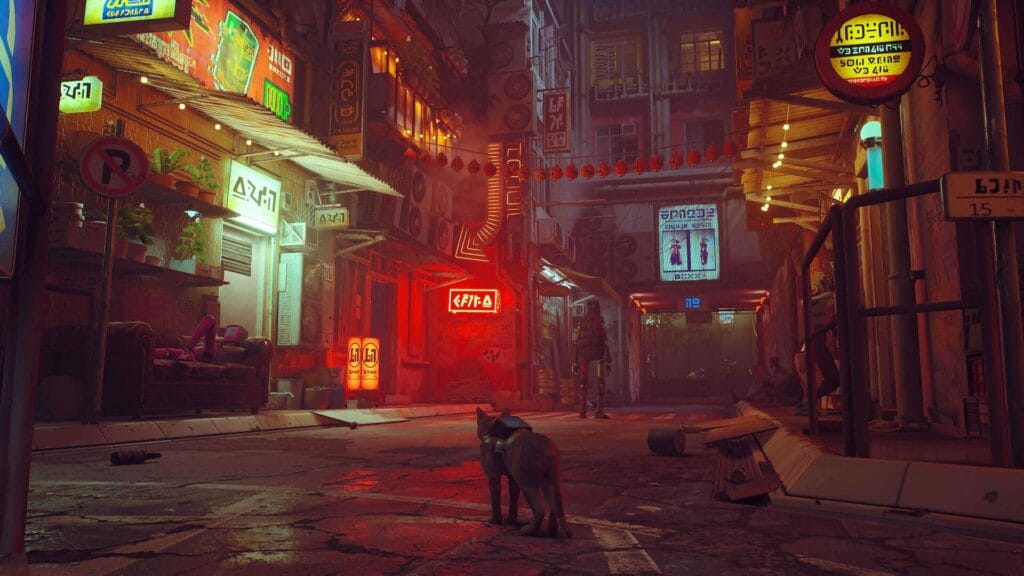
Gameplay Features
Cat-Centric Movement and Exploration
- Navigate tight spaces, leap across rooftops, climb pipes, and push objects—mechanics built around feline agility.
- Movement is fluid but guided: jumps are context-sensitive, lending a graceful and deliberate feel to traversal.
Puzzle-Solving and Stealth
- Use B-12 to interact with terminals, unlock doors, or distract hostile machines.
- Stealth sequences require avoiding hostile entities, such as Zurks (bio-organic parasites) and security drones, by utilising speed, cover, and timing.
- Environmental puzzles emphasise observation, object manipulation, and creative pathfinding.
Minimalist UI and Immersive Design
- The game omits intrusive HUD elements to maintain immersion.
- Environmental cues and subtle camera movements guide the progression, with storytelling seamlessly embedded within the world.
Enemy Variety and Encounters
- While mostly nonviolent, Stray features sections where evasion and puzzle-solving take precedence over combat.
- Zurks swarm the cat in chase sequences, while later areas introduce Sentinels, drone-like enforcers requiring stealth tactics.
- The tension comes not from firepower but vulnerability—you’re small, fragile, and must outthink threats.
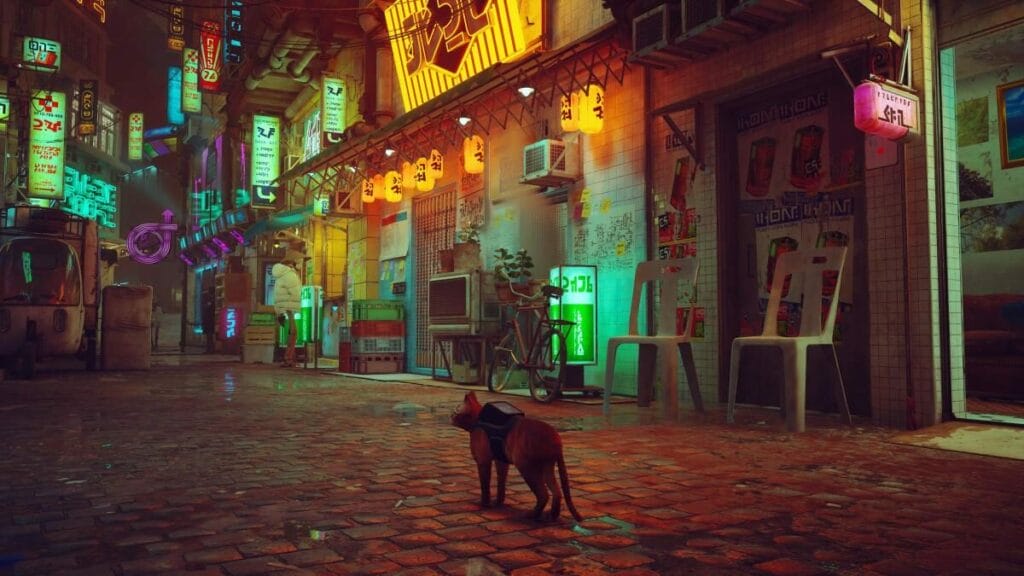
Narrative and Themes
Memory, Identity, and Artificial Life
- B-12’s arc revolves around recovering lost memories and reconciling its past as a human consciousness uploaded into a drone.
- The robotic citizens—remnants of humanity’s legacy—emulate human customs, seeking meaning in a world without their creators.
- The game raises quiet, melancholic questions about selfhood, loneliness, and the bonds between species.
Environmental Collapse and Hope
- Nature reclaims forgotten places while artificial life carries on, symbolising both decay and renewal.
- The ultimate goal—reaching the surface—is both literal and metaphorical: a journey toward freedom and light.
Visuals and Audio
Stray features stunning art direction with richly layered urban environments, dynamic lighting, and dense environmental detail. The city feels alive, even in decay, with graffiti, neon signs, overgrown plants, and expressive robot animations.
The soundtrack is a standout: a mix of ambient synth, melancholic piano, and electronic textures. Each zone has a distinct soundscape that reinforces its emotional tone, from the desolate slums to the quiet reverence of the abandoned upper city.
Have you played Stray? What’s your favourite part of it? We’d love to hear from you.
Other things you might want to know:
How many hours is Stray?
Stray takes around 5 hours to complete.
How many endings does Stray have?
Stray has one ending and has no branching paths.

